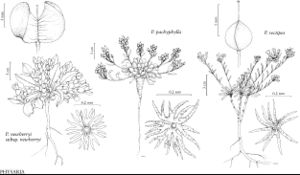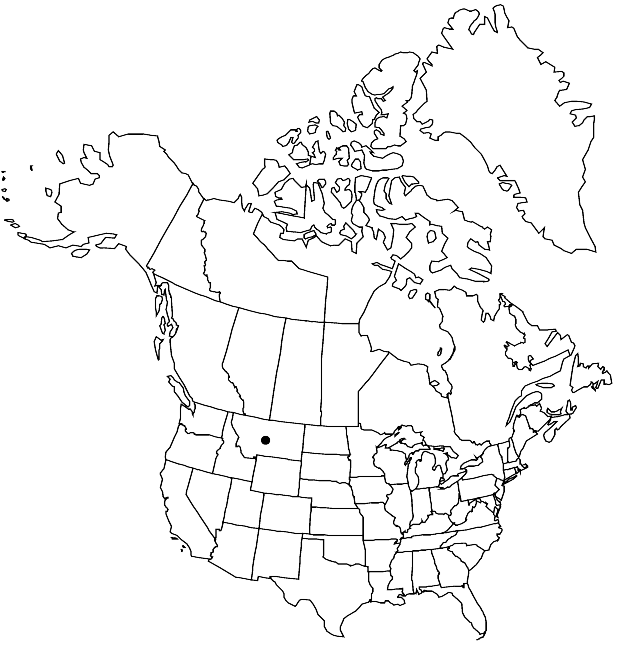Physaria pachyphylla
Novon 17: 187, fig. 4. 2007.
Perennials; caudex usually simple, rarely branched, (loosely mounded, rosette-like growth); densely (silvery or gray) pubescent, trichomes (sessile), 5-rayed, rays bifurcate, slightly fused near base of main rays, (tuberculate throughout, less over umbo). Stems several from base, decumbent to prostrate, (well-exserted beyond basal leaves), 0.2–0.5 dm. Basal leaves: (petiole differentiated from blade); blade (slightly cupped, leathery, nearly 1 mm thick), oblanceolate to orbicular, 1.2–2 cm, margins entire, (apex acute). Cauline leaves: blade spatulate, similar to basal. Racemes dense, (subumbellate). Fruiting pedicels (ascending, curved), 5–7 mm. Flowers: sepals (pale yellow), elliptic to oblong, 3.5–4.0 mm, (median pair somewhat thickened apically, cucullate); petals lingulate, 5–6 mm. Fruits globose or ellipsoid, slightly inflated (with slight apical constriction), 3–6 mm; valves pubescent, trichomes closely appressed; ovules 8 per ovary; style 1–3 mm (shorter than mature fruit). Seeds plump, (oblong).
Phenology: Flowering Jun–Jul.
Habitat: Barren areas of mixed white, pink, or reddish limestone and diatomaceous earth
Elevation: 1300-1600 m
Discussion
Of conservation concern.
Physaria pachyphylla is known from the Pryor Mountain Desert near the Wyoming state line.
Selected References
None.

